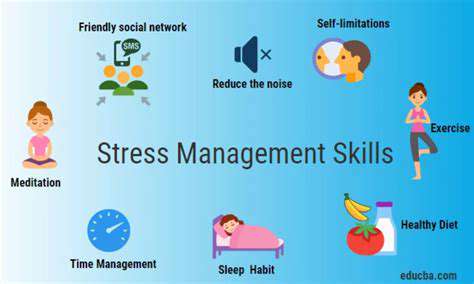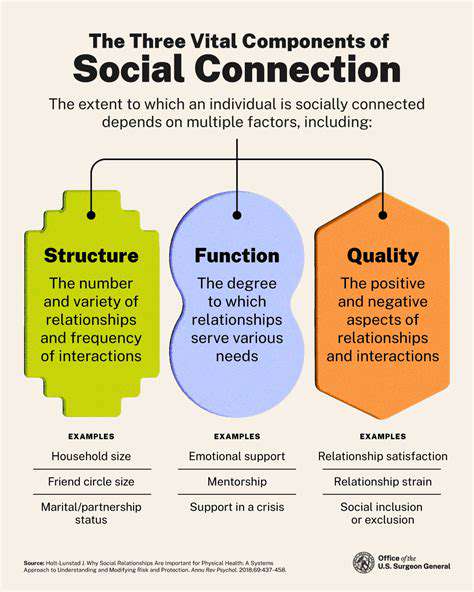Your daily routine itself might be whispering stress clues. Are you constantly rushing between commitments? Do certain responsibilities consistently drain your energy? Mapping out your week with colored markers (red for high-stress, green for low-stress) can visually expose problem areas needing adjustment.
Spotting Recurring Stress Themes
Stress often plays on repeat like a broken record. Maybe Sunday nights always bring anxiety about the coming workweek. Perhaps monthly reports trigger digestive issues like clockwork. These predictable patterns hold valuable information about your stress profile. They show not just what stresses you, but when and how it typically manifests.
Tracking these cycles over several months reveals deeper insights. You might discover that what seems like random stress actually follows specific rhythms tied to responsibilities, relationships, or even seasonal changes. This long-view perspective helps distinguish temporary stressors from chronic issues needing more attention.
Crafting Your Personal Stress Toolkit
Now comes the rewarding part - building your defenses against stress. Think of this as creating a personalized first-aid kit for stressful moments. Experiment to discover what truly works for you - maybe five minutes of box breathing calms you, while a coworker prefers a quick walk around the block. Physical movement releases pent-up stress energy, whether it's yoga, dancing to favorite songs, or gardening.
Learning to set boundaries acts as preventive medicine against stress. Practice saying Let me check my schedule instead of automatic yeses. Protecting time for proper sleep, nutritious meals, and meaningful connections isn't selfish - it's essential maintenance for your stress resilience. These habits form your foundation for handling life's pressures.
Developing Healthy Coping Mechanisms: Strategies for Stress Reduction

Mapping Your Stress Landscape
Your stress triggers form a personal geography that's worth exploring. Financial worries, workplace dynamics, and relationship tensions often emerge as common coordinates on this map. By identifying these locations, you can prepare appropriate navigation tools before entering potentially stressful territory.
When you notice stress patterns - like consistently feeling overwhelmed every quarter-end at work - you gain predictive power. This foresight lets you implement solutions in advance, whether it's blocking focus time in your calendar or having a prepared response for additional requests during crunch periods.
The Power of Present-Moment Awareness
Mindfulness practices offer an anchor in stressful storms. These techniques train your mind to observe thoughts and sensations without getting swept away by them. It's like developing a pause button between stimulus and reaction - creating space to choose your response.
Starting small makes mindfulness manageable. Try this: set a phone reminder to pause for three breaths before meals. Notice the food's colors, aromas, and textures. These micro-moments of presence accumulate into greater emotional balance throughout your day.
Building Your Support Scaffolding
Humans aren't designed to handle stress alone. Quality relationships provide shock absorbers for life's bumps. That might mean a coworker who listens without judgment, a friend who makes you laugh until your sides hurt, or a family member who always believes in you.
Different relationships serve different needs - some offer practical advice while others provide emotional comfort. The key lies in recognizing which connections replenish rather than drain you, then nurturing those intentionally.
Quick Stress Resets
When stress strikes, having immediate tools matters. The 4-7-8 breathing technique (inhale 4 counts, hold 7, exhale 8) can calm your nervous system in minutes. Progressive muscle relaxation - tensing then releasing muscle groups from toes to forehead - provides physical stress release. These portable techniques work anywhere, from office chairs to traffic jams.
When to Seek Professional Guidance
Sometimes stress becomes too heavy to lift alone. Consulting a therapist resembles hiring a personal trainer for your mental health. They provide customized strategies, spot unhealthy patterns you might miss, and offer objective perspective during challenging times.
Lifestyle as Stress Prevention
Your daily habits create your stress resilience baseline. Prioritizing sleep isn't luxury - it's maintenance for your stress-regulation systems. Nutrient-dense foods provide the raw materials your body needs to manage stress hormones. Movement - whether walking, swimming, or stretching - helps metabolize stress chemicals.
Joy acts as natural stress antidote. Making time for activities that light you up - painting, hiking, playing music - isn't frivolous. These pleasures create positive emotional reserves to draw from during difficult periods.
Nurturing a Supportive Network: The Importance of Social Connection

The Art of Meaningful Connection
Authentic relationships require cultivation, much like a garden. The most supportive connections grow from consistent care and mutual investment. These bonds provide safe harbors during life's storms - places where you can be fully yourself without pretense.
Deep listening forms the bedrock of these relationships. Try this: in your next conversation, focus completely on understanding rather than responding. Notice how this shifts the dynamic. Quality attention given freely becomes the currency of genuine connection.
Identifying Your Core Support Team
Not all relationships serve equal purposes in your support network. Your inner circle should include those who've demonstrated reliability during tough times - the people who show up with soup when you're sick or remember important dates without reminders.
Reflect on past challenges: who offered practical help? Who provided emotional grounding? These crisis-tested relationships form your foundational support structure worth prioritizing.
The Value of Wisdom Guides
Mentors offer more than advice - they provide roadmaps from experience. A good mentor helps you see around corners you haven't encountered yet. They combine knowledge with insight about how to apply it in real-world situations.
Finding mentors requires proactive outreach. When approaching potential mentors, be specific about what guidance you seek and respectful of their time. The best mentoring relationships benefit both parties through shared learning and perspective exchange.
Communication That Builds Trust
Trust grows through consistent actions more than words. Showing up when promised and following through on commitments builds relational credibility over time. Vulnerability - appropriately shared - deepens connections by allowing others to see and support the real you.
The Reciprocity Principle
Healthy networks operate on give-and-take. Being as willing to offer support as to receive it creates balanced, sustainable relationships. This might mean celebrating a friend's promotion as enthusiastically as you'd want yours celebrated, or providing practical help during their busy season.
Navigating Relationship Challenges
Even strong connections encounter rough patches. Addressing conflicts early with curiosity rather than accusation prevents small misunderstandings from becoming major rifts. Approach tense conversations with the goal of mutual understanding rather than winning.
Maintaining and Growing Your Network
Relationships require regular nurturing. Small, consistent gestures - a quick check-in text or sharing an interesting article - keep connections alive between deeper interactions. Expanding your network means stepping outside comfort zones to meet people with different perspectives who can challenge and inspire you.